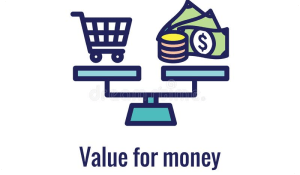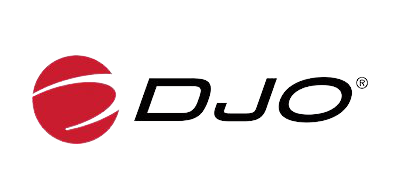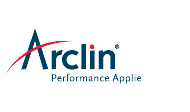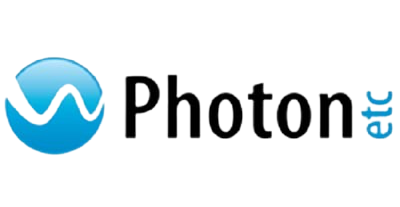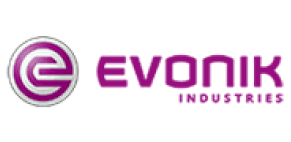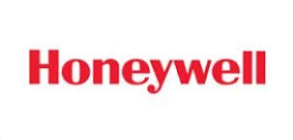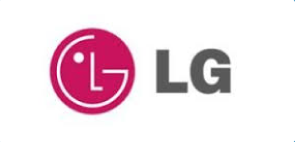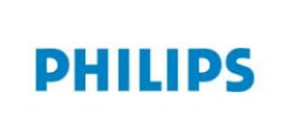Report Summary
Eternity Insights can provide a deep dive research report highlighting the market and competitive in-telligence across the key segments of the market. The report also considers the impact of COVID-19 on the global Process Orchestration market. The report considers 2018-2020 historic period, 2021 as base year, and 2022-2028 as forecast period. The report includes quantitative analysis of the market supported by the mar-ket drivers, challenges, and trends to accurately map the market scenario and competition.
Process Orchestration market report is based on robust research methodology designed using blend of research ap-proaches developed using secondary/desk research and validated through the primary research and expert insights. Eternity Insights also uses paid data bases such as FACIVA, Hoovers, and other bench-marking and forecasting tools to provide accurate statistical analysis of supply and demand trends.

To learn more about this report
Key Research Highlights: Market Drivers
The Process Orchestration market is estimated to expand at a considerable growth rate during the forecast period ow-ing to increasing prevalence of venous diseases and increasing new product approvals to cater this demand. Rise in the awareness about the diseases, increasing importance of early diagnosis, and growing spending on chronic diseases are poised to boost the market growth. Moreover, the key players in the market are investing in research and development of technologically advanced products leading to increased utilization of the Process Orchestration products across developed and developing countries of the world.
Key Research Highlights: Market Restrains
Limited awareness about the diseases, high cost of products, low economical condition, and lack of favorable insurance systems restricts the adoption of Process Orchestration products across developing regions of the globe. However, launch of new products with low cost and increasing efforts for market penetration in these regions can offer lucrative growth opportunities for the players in the Process Orchestration market.

To learn more about this report
Key Research Highlights: Trends
Increasing research and development spending on Process Orchestration development has been the leading industry trend of Process Orchestration market
The leading players in the market are focused on developing products which are cost effective and high quality to tap the huge unaddressed opportunities in the developing regions. This can be wit-nessed from the increasing spending on research and development and growing number of new product approvals.
Global Process Orchestration Market Size, 2018-2028 (USD MILLION)

To learn more about this report
Market Segmentation
| Report Attributes |
Details |
| The market size value in 2021 |
USD XX.XX Million |
| CAGR (2021 - 2028) |
XX.XX % |
| The Revenue forecast in 2028 |
USD XX.XX Million |
| Base year for estimation |
2021 |
| Historical data |
2018-2019 |
| Forecast period |
2022-2028 |
| Quantitative units |
- Revenue in USD Million
- CAGR from 2021 to 2028
|
| Report coverage |
Revenue forecast, company ranking, competitive landscape, growth factors, and trends |
| Segments covered |
By Type Outlook, Application Outlook, Regional Outlook |
| By Type Outlook |
Solution, Services, Other |
| By Application Outlook |
BFSI, Telecom and IT, Consumer Goods and Retail, Media and Entertainment, Manufacturing, Transportation and Logistics, Energy and Utilities, Others |
| Regional scope |
North America, Europe, Asia Pacific, Latin America, Middle East & Africa |
| Country scope |
U.S., Canada, U.K., Germany, France, BENELUX, China, India, Japan, South Korea, Brazil, Saudi Arabia, UAE, Turkey |
| Key companies profiled |
SAP, IBM, Oracle, Cisco, CA Technologies, Fujitsu, Micro Focus, HCL, Servicenow, Opentext, BMC Software, Newgen Software, Software AG, Wipro, Everteam, Tibco Software, Icaro Tech, Cortex, EQ Technologic, PMG.Net, Nipendo, Data Ductus, Arvato AG, Ayehu, Dealflo |
| Customization Available |
Yes, the report can be tailored to meet your specific requirements. |
Key Market Players
- SAP
- IBM
- Oracle
- Cisco
- CA Technologies
- Fujitsu
- Micro Focus
- HCL
- Servicenow
- Opentext
- BMC Software
- Newgen Software
- Software AG
- Wipro
- Everteam
- Tibco Software
- Icaro Tech
- Cortex
- EQ Technologic
- PMG.Net
- Nipendo
- Data Ductus
- Arvato AG
- Ayehu
- Dealflo
PROCESS ORCHESTRATION Market, By Type
PROCESS ORCHESTRATIONMarket, By Application
- BFSI
- Telecom and IT
- Consumer Goods and Retail
- Media and Entertainment
- Manufacturing
- Transportation and Logistics
- Energy and Utilities
- Others
Key Benefits To The Stake Holders
- Qualitative and quantitative analysis of the market based on segmentation involving both economic as well as non-economic factors
- Provision of market value (USD Billion) and volume (Tons) data for each segment and sub-segment
- Indicates the region and segment that is expected to witness the fastest growth as well as to dominate the market
- Analysis by geography highlighting the consumption of the product/service in the region as well as indicating the factors that are affecting the market within each region
- Competitive landscape which incorporates the market ranking of the major players, along with new service/product launches, partnerships, business expansions and acquisitions in the past five years of companies profiled
- Extensive company profiles comprising of company overview, company insights, product benchmarking and SWOT analysis for the major market players
- The current as well as the future market outlook of the industry with respect to recent developments (which involve growth opportunities and drivers as well as challenges and restraints of both emerging as well as developed regions
Table Of Contents
Table of Contents
Process Orchestration Market Report by Company, Regions, Types and Applications, Global Status and Forecast to 2025
1 Industry Overview of Process Orchestration
1.1 Process Orchestration Market Overview
1.1.1 Process Orchestration Product Scope
1.1.2 Market Status and Outlook
1.2 Global Process Orchestration Market Size and Analysis by Regions
1.2.1 North America
1.2.2 Europe
1.2.3 China
1.2.4 Rest of Asia Pacific
1.2.5 Central & South America
1.2.6 Middle East & Africa
1.3 Process Orchestration Market by Type
1.3.1 Solution
1.3.2 Services
1.4 Process Orchestration Market by End Users/Application
1.4.1 BFSI
1.4.2 Telecom and IT
1.4.3 Consumer Goods and Retail
1.4.4 Media and Entertainment
1.4.5 Manufacturing
1.4.6 Transportation and Logistics
1.4.7 Energy and Utilities
1.4.8 Others
2 Global Process Orchestration Competition Analysis by Players
2.1 Process Orchestration Market Size (Value) by Players (2018 and 2019)
2.2 Competitive Status and Trend
2.2.1 Market Concentration Rate
2.2.2 Product/Service Differences
2.2.3 New Entrants
2.2.4 The Technology Trends in Future
3 Company (Top Players) Profiles
3.1 SAP
3.1.1 Company Profile
3.1.2 Main Business/Business Overview
3.1.3 Products, Services and Solutions
3.1.4 Process Orchestration Revenue (Value) (2014-2019)
3.1.5 Recent Developments
3.2 IBM
3.2.1 Company Profile
3.2.2 Main Business/Business Overview
3.2.3 Products, Services and Solutions
3.2.4 Process Orchestration Revenue (Value) (2014-2019)
3.2.5 Recent Developments
3.3 Oracle
3.3.1 Company Profile
3.3.2 Main Business/Business Overview
3.3.3 Products, Services and Solutions
3.3.4 Process Orchestration Revenue (Value) (2014-2019)
3.3.5 Recent Developments
3.4 Cisco
3.4.1 Company Profile
3.4.2 Main Business/Business Overview
3.4.3 Products, Services and Solutions
3.4.4 Process Orchestration Revenue (Value) (2014-2019)
3.4.5 Recent Developments
3.5 CA Technologies
3.5.1 Company Profile
3.5.2 Main Business/Business Overview
3.5.3 Products, Services and Solutions
3.5.4 Process Orchestration Revenue (Value) (2014-2019)
3.5.5 Recent Developments
3.6 Fujitsu
3.6.1 Company Profile
3.6.2 Main Business/Business Overview
3.6.3 Products, Services and Solutions
3.6.4 Process Orchestration Revenue (Value) (2014-2019)
3.6.5 Recent Developments
3.7 Micro Focus
3.7.1 Company Profile
3.7.2 Main Business/Business Overview
3.7.3 Products, Services and Solutions
3.7.4 Process Orchestration Revenue (Value) (2014-2019)
3.7.5 Recent Developments
3.8 HCL
3.8.1 Company Profile
3.8.2 Main Business/Business Overview
3.8.3 Products, Services and Solutions
3.8.4 Process Orchestration Revenue (Value) (2014-2019)
3.8.5 Recent Developments
3.9 Servicenow
3.9.1 Company Profile
3.9.2 Main Business/Business Overview
3.9.3 Products, Services and Solutions
3.9.4 Process Orchestration Revenue (Value) (2014-2019)
3.9.5 Recent Developments
3.10 Opentext
3.10.1 Company Profile
3.10.2 Main Business/Business Overview
3.10.3 Products, Services and Solutions
3.10.4 Process Orchestration Revenue (Value) (2014-2019)
3.10.5 Recent Developments
3.11 BMC Software
3.12 Newgen Software
3.13 Software AG
3.14 Wipro
3.15 Everteam
3.16 Tibco Software
3.17 Icaro Tech
3.18 Cortex
3.19 EQ Technologic
3.20 PMG.Net
3.21 Nipendo
3.22 Data Ductus
3.23 Arvato AG
3.24 Ayehu
3.25 Dealflo
4 Global Process Orchestration Market Size by Type and Application (2014-2019)
4.1 Global Process Orchestration Market Size by Type (2014-2019)
4.2 Global Process Orchestration Market Size by Application (2014-2019)
4.3 Potential Application of Process Orchestration in Future
4.4 Top Consumer/End Users of Process Orchestration
5 North America Process Orchestration Development Status and Outlook
5.1 North America Process Orchestration Market Size (2014-2019)
5.2 North America Process Orchestration Market Size and Market Share by Players (2018 and 2019)
6 Europe Process Orchestration Development Status and Outlook
6.1 Europe Process Orchestration Market Size (2014-2019)
6.2 Europe Process Orchestration Market Size and Market Share by Players (2018 and 2019)
7 China Process Orchestration Development Status and Outlook
7.1 China Process Orchestration Market Size (2014-2019)
7.2 China Process Orchestration Market Size and Market Share by Players (2018 and 2019)
8 Rest of Asia Pacific Process Orchestration Development Status and Outlook
8.1 Rest of Asia Pacific Process Orchestration Market Size (2014-2019)
8.2 Rest of Asia Pacific Process Orchestration Market Size and Market Share by Players (2018 and 2019)
9 Central & South America Process Orchestration Development Status and Outlook
9.1 Central & South America Process Orchestration Market Size (2014-2019)
9.2 Central & South America Process Orchestration Market Size and Market Share by Players (2018 and 2019)
10 Middle East & Africa Process Orchestration Development Status and Outlook
10.1 Middle East & Africa Process Orchestration Market Size (2014-2019)
10.2 Middle East & Africa Process Orchestration Market Size and Market Share by Players (2018 and 2019)
11 Market Forecast by Regions, Type and Application (2019-2025)
11.1 Global Process Orchestration Market Size (Value) by Regions (2019-2025)
11.1.1 North America Process Orchestration Revenue and Growth Rate (2019-2025)
11.1.2 Europe Process Orchestration Revenue and Growth Rate (2019-2025)
11.1.3 China Process Orchestration Revenue and Growth Rate (2019-2025)
11.1.4 Rest of Asia Pacific Process Orchestration Revenue and Growth Rate (2019-2025)
11.1.5 Central & South America Process Orchestration Revenue and Growth Rate (2019-2025)
11.1.6 Middle East & Africa Process Orchestration Revenue and Growth Rate (2019-2025)
11.2 Global Process Orchestration Market Size (Value) by Type (2019-2025)
11.3 Global Process Orchestration Market Size by Application (2019-2025)
12 Process Orchestration Market Dynamics
12.1 Process Orchestration Market Opportunities
12.2 Process Orchestration Challenge and Risk
12.2.1 Competition from Opponents
12.2.2 Downside Risks of Economy
12.3 Process Orchestration Market Constraints and Threat
12.3.1 Threat from Substitute
12.3.2 Government Policy
12.3.3 Technology Risks
12.4 Process Orchestration Market Driving Force
12.4.1 Growing Demand from Emerging Markets
12.4.2 Potential Application
13 Market Effect Factors Analysis
13.1 Technology Progress/Risk
13.1.1 Substitutes
13.1.2 Technology Progress in Related Industry
13.2 Consumer Needs Trend/Customer Preference
13.3 External Environmental Change
13.3.1 Economic Fluctuations
13.3.2 Other Risk Factors
14 Research Finding/Conclusion
15 Appendix
Methodology
Analyst Introduction
Data Source







